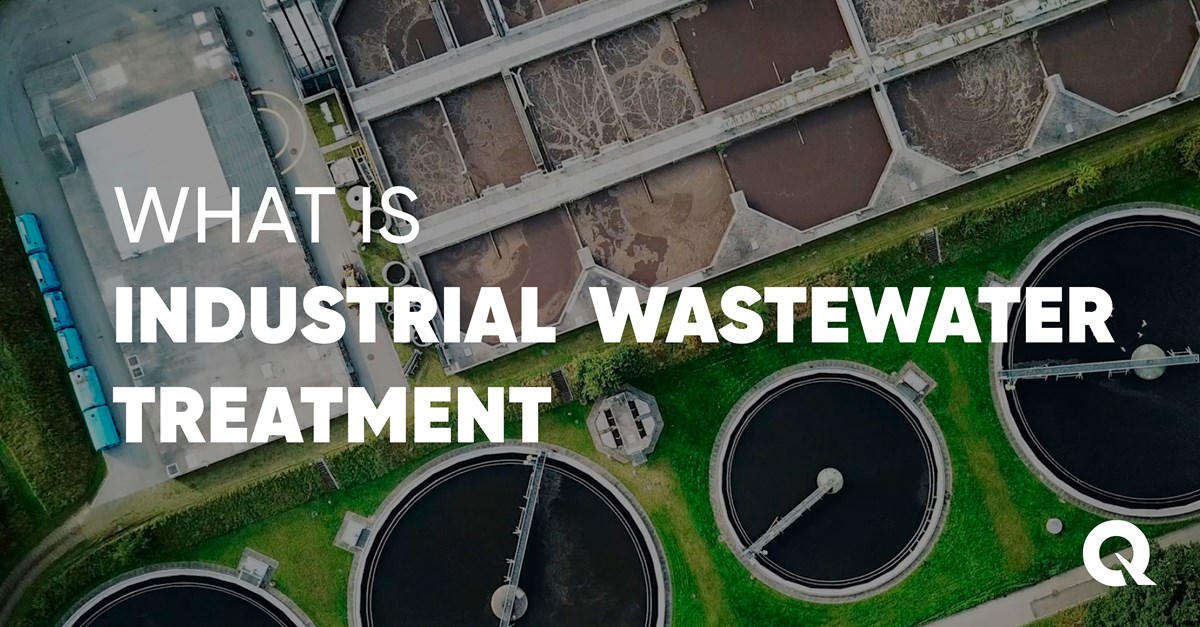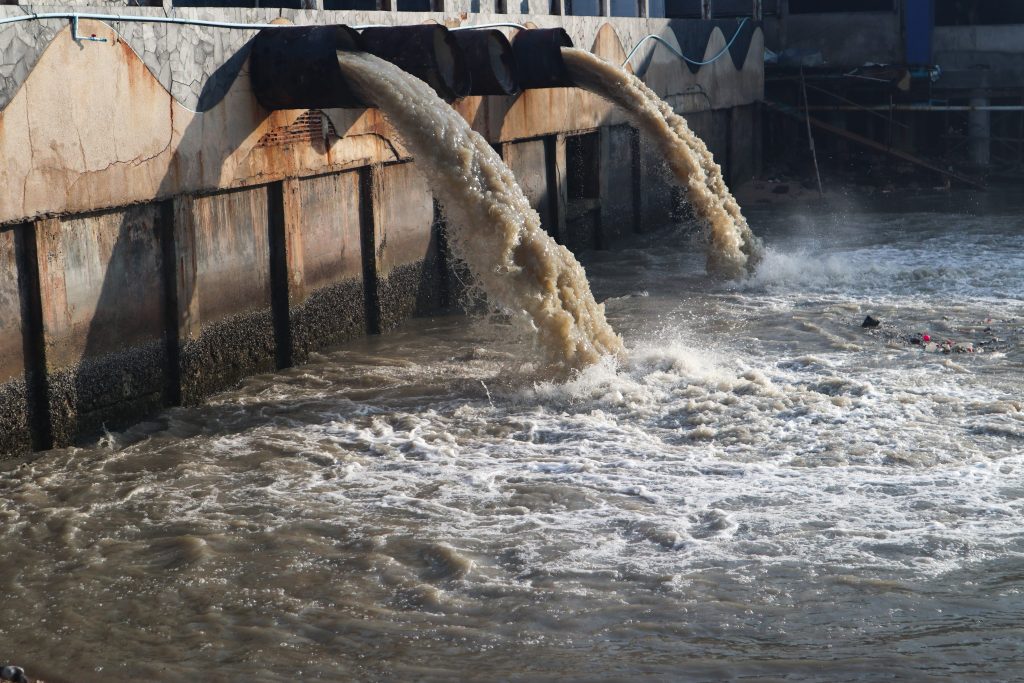Industrial Waste Water Treatment-- Efficient Waste Monitoring for Manufacturing Facilities
Industrial Waste Water Treatment-- Efficient Waste Monitoring for Manufacturing Facilities
Blog Article
Challenges and Solutions in Industrial Waste Water Treatment
The treatment of industrial wastewater provides a multifaceted variety of obstacles, varying from stringent regulative compliance to the details of price administration and technical constraints. The variability in waste structure even more complicates the efficiency of standard therapy techniques, commonly resulting in intensified functional expenses.
Regulatory Compliance Difficulties
Exactly how can commercial facilities browse the facility landscape of regulative compliance in wastewater therapy? The regulative structure governing wastewater management is multifaceted, frequently varying by territory and kind of industry. Facilities needs to comply with federal, state, and regional laws that determine effluent quality criteria, discharge limitations, and tracking demands. Failure to abide can lead to extreme penalties, including penalties and functional shutdowns.
To effectively handle these compliance challenges, centers should apply durable monitoring and reporting systems that make certain real-time data collection and evaluation. Regular audits and danger assessments can identify prospective compliance gaps, enabling for aggressive modifications in therapy procedures. Worker training programs concentrating on regulative understanding and best methods are vital to promote a culture of compliance within the organization.
Additionally, involving with regulative firms can offer beneficial understandings and clear up ambiguous guidelines. Facilities may additionally take advantage of seeking advice from with ecological specialists who focus on wastewater treatment conformity, ensuring that they stay informed of developing regulations. By embracing these approaches, commercial centers can not only meet conformity needs however likewise boost their functional efficiency and ecological stewardship.
Price and Financial Barriers
Browsing governing conformity in wastewater therapy commonly presents considerable monetary obstacles for commercial centers. The expenses connected with implementing necessary treatment modern technologies, maintaining compliance with strict policies, and managing operational expenditures can be intimidating. Lots of companies encounter high first capital investment for the building or upgrading of wastewater therapy plants, which might stress budgets, particularly for medium-sized and little enterprises.
In addition, recurring functional costs, consisting of labor, chemical, and upkeep inputs, add to the monetary worry. The unpredictability of varying energy prices and the possible need for extra investments to satisfy evolving policies exacerbate these economic stress. In a lot of cases, the absence of economic motivations or assistance from federal government bodies makes it a lot more difficult for organizations to validate investments in innovative treatment systems.
Furthermore, the economic practicality of wastewater treatment remedies is commonly examined, specifically for sectors with limited earnings margins. Consequently, it is crucial for industrial centers to check out cost-efficient methods, such as embracing ingenious financing alternatives, taking part in collaborations, and leveraging arising technologies that can aid reduce these financial barriers while making sure conformity with ecological requirements.

Technological Limitations
Numerous technical constraints impede the efficiency of industrial wastewater therapy processes. One significant obstacle is the insufficiency of existing treatment technologies to resolve complicated contaminants. Many standard techniques, such as activated sludge and chemical rainfall, battle with the elimination of emerging go to my blog pollutants, consisting of microplastics and drugs. This restriction frequently causes the discharge of inadequately dealt with water, which can have damaging environmental influences.
In addition, the scalability of treatment modern technologies positions an obstacle. While some advanced techniques, like membrane layer filtration or innovative oxidation, show pledge in regulated settings, their application on a bigger scale can be prohibitively pricey and technically tough. Upkeep and functional complexities even more make complex the adoption of these systems, specifically for smaller sized industries with limited technical expertise.
The integration of real-time tracking modern technologies also remains inadequate in several therapy centers. Without effective monitoring systems, operators can not appropriately assess treatment effectiveness or find possible failings, leading to inconsistent effluent quality. Resolving these technical constraints via study and advancement, together with investment in innovative solutions, is crucial for enhancing the efficiency of commercial wastewater therapy and guaranteeing regulatory compliance.
Irregularity in Waste Structure
In the realm of industrial wastewater therapy, the irregularity in waste composition presents an awesome difficulty. Industries generate wastewater with diverse features, affected by factors such as production procedures, resources, and operational techniques. This heterogeneity makes complex the treatment process, as standard systems commonly have a hard time to effectively resolve the vast array of toxins existing.
As an example, wastewater from food handling may consist of high degrees of natural matter, while effluents from chemical production could include hefty metals and unsafe compounds. This variation requires adaptable therapy approaches to guarantee conformity with environmental regulations and secure public wellness. Furthermore, fluctuations in waste structure can take place in time, influenced by modifications in manufacturing routines, upkeep tasks, or the introduction of new products.

Cutting-edge Therapy Solutions
Cutting-edge treatment options are vital for resolving the intricacies of commercial wastewater management. Traditional approaches usually drop brief in effectively removing a broad array of pollutants, especially in facilities with varied effluent streams. Current developments concentrate on incorporating cutting-edge innovations to boost treatment efficiency and sustainability.
One encouraging technique is the use of sophisticated oxidation procedures (AOPs), which take advantage of powerful oxidants to degrade organic contaminants. AOPs, consisting of photocatalysis and ozonation, can significantly reduce toxic compounds and boost effluent top quality. Furthermore, membrane layer bioreactor (MBR) technology has gotten traction, incorporating biological therapy with membrane layer filtration, leading to high-grade effluent and decreased impact.
Another innovative service is the implementation of source recuperation systems. Strategies like anaerobic digestion not just deal with wastewater but likewise produce biogas, which can be taken advantage of as a renewable resource resource. The adoption of artificial intelligence and equipment understanding designs can enhance treatment procedures by anticipating variations in wastewater composition, therefore boosting functional performance.
These ingenious services not only address regulative conformity yet additionally advertise environmental sustainability, leading the way for a much more effective and resilient commercial environment.
Final Thought
In final thought, resolving the challenges of industrial wastewater treatment needs a complex approach that integrates regulative compliance, expense monitoring, and technical advancements. A commitment to constant enhancement in therapy methods will inevitably add to the reliable management of industrial wastewater and ecological protection.
The treatment of industrial wastewater provides a diverse selection of obstacles, varying from strict regulative conformity to the details of cost management and technological limitations. Industrial Waste Water Treatment.Navigating regulative conformity in wastewater treatment often presents significant financial challenges for commercial centers. Addressing these technical constraints via research study and growth, along great post to read with financial investment in cutting-edge remedies, is critical for boosting the efficiency of commercial wastewater treatment and ensuring regulatory compliance
Wastewater therapy centers should invest in durable tracking systems and flexible therapy modern technologies capable of suiting differing influent features.In verdict, attending to the difficulties of industrial wastewater therapy needs a multifaceted strategy that incorporates governing compliance, price monitoring, and technological improvements.
Report this page